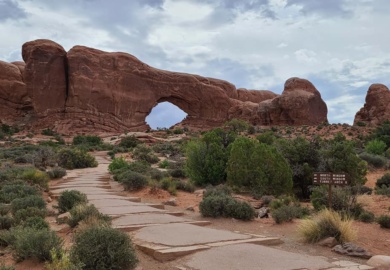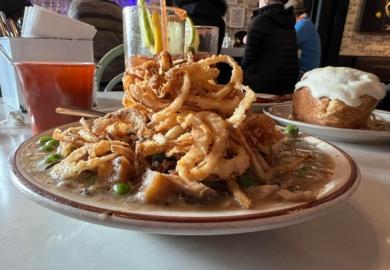Table of Contents
Mesa Verde National Park, located in the southwestern corner of Colorado, offers an unparalleled glimpse into the lives of the Ancestral Puebloans who inhabited the area from AD 600 to 1300. This UNESCO World Heritage Site is renowned for its well-preserved cliff dwellings, diverse landscapes, and rich history. A visit to Mesa Verde is not just a journey through breathtaking scenery but also a step back in time, providing a unique opportunity to connect with the ancient past. If you’re planning a trip, here’s how to spend an unforgettable four days in Mesa Verde National Park.
History of Mesa Verde
Mesa Verde National Park is a treasure trove of ancient history, offering a window into the lives of the Ancestral Puebloans. These early inhabitants established a thriving civilization on the mesas and in the canyons of what is now southwestern Colorado.
The Ancestral Puebloans, formerly known as the Anasazi, began settling in the Mesa Verde region around AD 600. Initially, they lived in pit houses on the mesa tops and farmed the fertile land. Over the centuries, their culture evolved, and by AD 1000, they began constructing more sophisticated pueblos made of stone and adobe.
By the late 12th century, the Ancestral Puebloans started building the cliff dwellings for which Mesa Verde is famous. These remarkable structures were often multi-story buildings containing numerous rooms, kivas (ceremonial rooms), and towers. The cliff dwellings offered protection from the elements and potential invaders.
Around AD 1300, the Ancestral Puebloans mysteriously left the Mesa Verde region, migrating south to what is now New Mexico and Arizona. The reasons for their departure remain a topic of scholarly debate, with theories suggesting factors such as drought, resource depletion, and social or political changes.
In 1906, President Theodore Roosevelt established Mesa Verde National Park to preserve the remarkable archaeological sites and the cultural heritage of the Ancestral Puebloans. Today, the park protects nearly 5,000 archaeological sites, including 600 cliff dwellings, making it one of the most significant archaeological preserves in the United States.
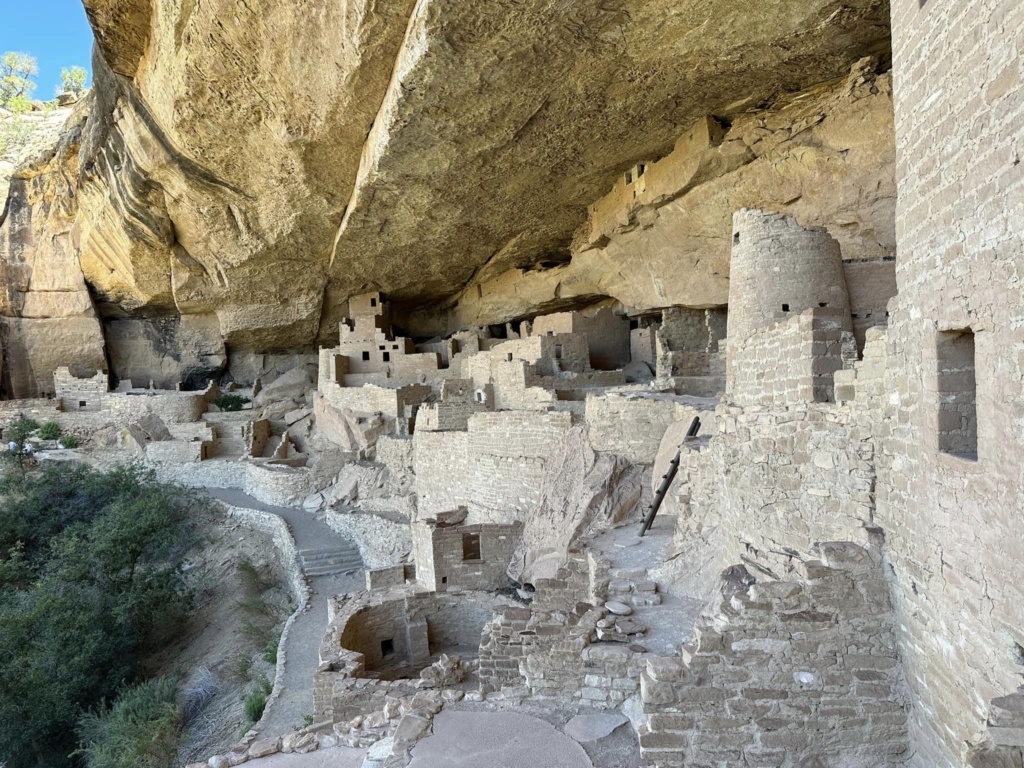
Four-Day Itinerary for Exploring Mesa Verde National Park
Embarking on a four-day adventure in Mesa Verde National Park allows for a comprehensive exploration of its historical and natural wonders. This itinerary is designed to offer a balanced experience, encompassing visits to ancient cliff dwellings, scenic hikes, and engaging educational activities. Each day is carefully planned to maximize time within the park, ensuring that visitors gain a deep appreciation for the rich cultural heritage and stunning landscapes of this remarkable UNESCO World Heritage Site.
Day 1: Arrival at Mesa Verde
Begin your adventure by arriving early at the park to make the most of your visit. Stop at the Mesa Verde Visitor and Research Center to gather maps, brochures, and essential information about the park. This is also a great place to purchase tickets for guided tours of the cliff dwellings, which are often necessary for accessing these archaeological sites.
After settling in, head to the Chapin Mesa Archeological Museum. Here, you’ll find artifacts and exhibits that provide an overview of the Ancestral Puebloan culture and the park’s history. Take a short hike to Spruce Tree House, one of the best-preserved cliff dwellings in the park. This self-guided tour allows you to explore the ancient dwelling at your own pace.
Day 2: Cliff Palace & Balcony House
Dedicate your second day to visiting the park’s most iconic sites. Start with a guided tour of Cliff Palace, the largest cliff dwelling in North America. The tour involves climbing ladders and navigating narrow passages, but the breathtaking views and fascinating history make it well worth the effort.
Next, head to Balcony House, known for its adventurous access routes, including a 32-foot ladder climb and a crawl through a 12-foot tunnel. This tour offers a more intimate look at the daily lives of the Ancestral Puebloans.
In the afternoon, take a scenic drive along the Mesa Top Loop Road. This 6-mile loop features numerous overlooks and archaeological sites, including pit houses, early Pueblo villages, and panoramic views of the surrounding landscape.
Day 3: Far View Sites Complex
On your third day, explore some of the park’s hiking trails. The Petroglyph Point Trail is a 2.4-mile loop that offers stunning views and the chance to see ancient petroglyphs up close. This moderate hike is perfect for those looking to experience the natural beauty of Mesa Verde while getting a glimpse of its ancient art.
In the afternoon, visit the Far View Sites Complex, a group of mesa-top ruins that include Far View House, Pipe Shrine House, and Coyote Village. This self-guided tour provides insight into the everyday lives of the people who lived on the mesa before moving to the cliff dwellings.
Day 4: Wetherill Mesa
Spend your final day at Wetherill Mesa, a quieter part of the park with fewer crowds. Start with a visit to Long House, the second-largest cliff dwelling in the park. The guided tour here is less strenuous than others, making it accessible for visitors of all ages.
Afterward, explore the Step House and take the self-guided trail to see more cliff dwellings and rock art. Wetherill Mesa offers a peaceful and reflective end to your visit, allowing you to absorb the beauty and history of Mesa Verde one last time.
Where to Stay When Visiting Mesa Verde National Park
Finding the right accommodation can enhance your experience at Mesa Verde. Here are some options:
- Far View Lodge: Located within the park, this lodge offers convenience and stunning views of the surrounding landscape. Staying here allows you to maximize your time in the park and enjoy early morning or late evening visits to the sites.
- Camping: Morefield Campground, also located within the park, provides a great option for those who enjoy camping. The campground offers tent and RV sites, along with amenities such as showers, laundry facilities, and a camp store.
- Nearby Towns: For those who prefer staying outside the park, the towns of Cortez and Mancos offer a range of accommodations, including hotels, motels, and bed and breakfasts. These towns are a short drive from the park and provide additional dining and shopping options.
Staying in Mesa Verde National Park
Advantages of Staying in Mesa Verde National Park:
- Proximity to Attractions: Staying within the park means you’re just minutes away from the main attractions, allowing for more time to explore and less time spent commuting.
- Early Access: Guests can enjoy early morning visits to popular sites before the crowds arrive, making for a more intimate and peaceful experience.
- Scenic Views: Accommodations like Far View Lodge offer breathtaking views of the surrounding landscape, enhancing your overall experience.
- Immersive Experience: Being within the park allows you to fully immerse yourself in Mesa Verde’s natural beauty and historical significance, creating a deeper connection to the site.
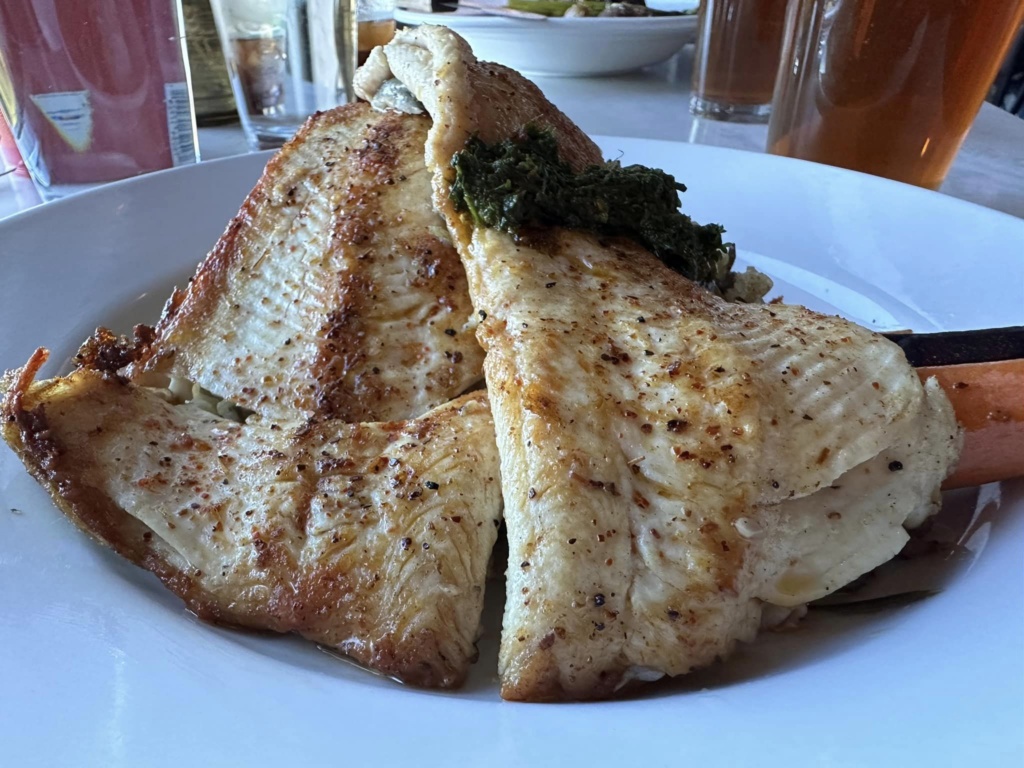
Disadvantages of Staying in Mesa Verde National Park:
Limited Amenities: On-site accommodations may have fewer amenities compared to hotels in nearby towns. Dining options within the park are also limited. When we stayed at Far View Lodge, we had no TV in the room, no internet, no Wi-Fi, and limited phone services.
Higher Costs: Staying within the park can be more expensive than accommodations in nearby towns, especially during peak season. This is VERY real.
- Breakfast is not included, so that was about $35 for 2 people per day.
- Lunch is in the same dining room as breakfast but not in the hotel. It costs $52 for two pieces of cheese pizza, one cheeseburger, two side salads, and two sodas.
- There were only two dining rooms (same menu). One for reservations and one for walk-ins. Dinner ranged between $75-$100 for 2 people per night.
Accessibility: The park’s remote location means you might have to drive a considerable distance for additional services and entertainment options available in larger towns.
Crowds: During peak season, on-site accommodations can be fully booked, leading to crowded conditions and potentially noisy environments.
Monuments to Visit Outside Mesa Verde
If you have extra time, consider exploring the nearby attractions and monuments that enrich your Mesa Verde experience:
- Hovenweep National Monument: Located about 45 miles west of Mesa Verde, Hovenweep features six prehistoric villages built between AD 1200 and 1300. The ruins include multi-story towers perched on canyon rims and balanced on boulders, offering a fascinating glimpse into the past.
- Canyons of the Ancients National Monument: This monument encompasses more than 170,000 acres and contains the highest known density of archaeological sites in the United States. Visit the Anasazi Heritage Center, which serves as the visitor center and museum, to learn more about the region’s rich history.
- Durango and Silverton Narrow Gauge Railroad: About an hour’s drive from Mesa Verde, this historic steam-powered train takes you through the stunning San Juan Mountains. The journey offers breathtaking views and a unique way to experience the area’s natural beauty.
- Four Corners Monument: This is the only place in the United States where four states (Colorado, New Mexico, Arizona, and Utah) meet at a single point. Visiting this unique landmark makes for a fun photo opportunity and a chance to stand in four states simultaneously.
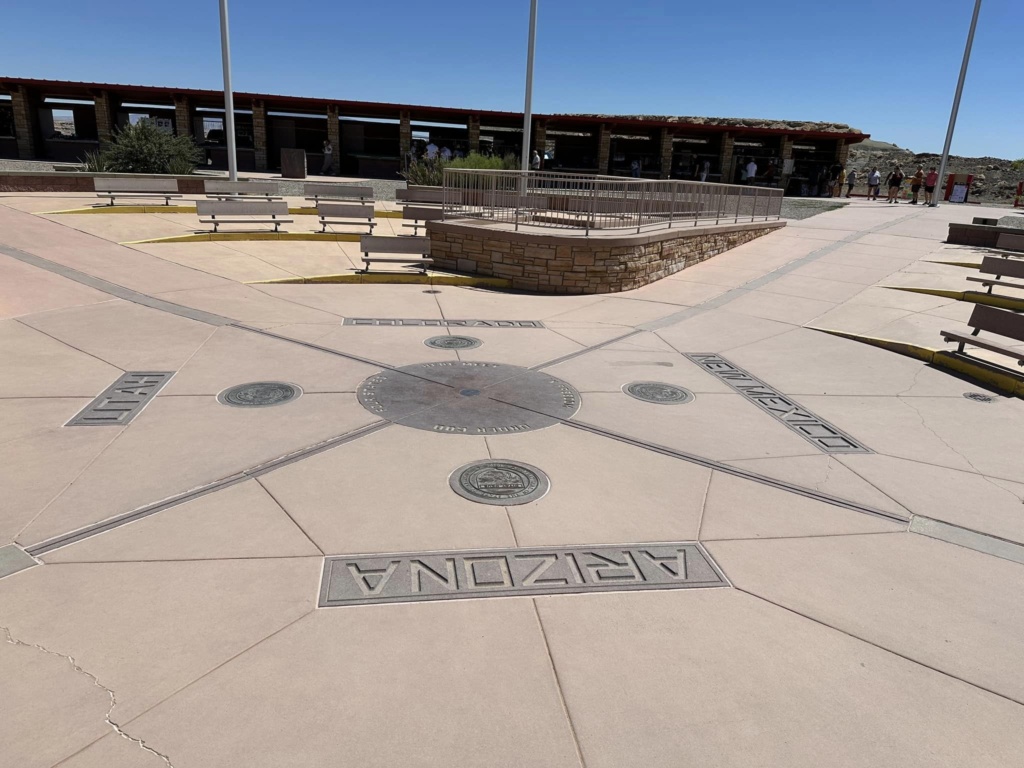
Around Mesa Verde National Park
- Cortez: Just 10 miles from the park, Cortez serves as a convenient base for exploring Mesa Verde and other regional attractions. Key sites include:
- Cortez Cultural Center: A hub for cultural events, exhibits, and performances related to Native American heritage and local history.
- Hawkins Preserve: Offers hiking trails, wildlife viewing, and scenic vistas of the surrounding landscape.
- Mancos: Located 20 miles from the park, Mancos is known for its artsy vibe and Old West charm. Highlights include:
- Mancos State Park: This park is ideal for fishing, boating, and hiking, and it offers beautiful views of the La Plata Mountains.
- Mancos Common Press: This historic printing press is now a community arts center offering workshops and exhibits.
- Durango: About 35 miles from Mesa Verde, Durango is a bustling town with a rich history and plenty to do. Key attractions include:
- Durango & Silverton Narrow Gauge Railroad: This scenic train ride through the San Juan Mountains offers breathtaking views and a glimpse into the region’s mining history.
- Historic Downtown Durango: This area features a variety of shops, restaurants, and galleries housed in beautifully preserved historic buildings.
- Dolores: Situated 15 miles north of Cortez, Dolores is a charming town on the banks of the Dolores River. Attractions include:
- Anasazi Heritage Center: A museum and archaeological site offering exhibits on the Ancestral Puebloans and the Canyons of the Ancients National Monument.
- McPhee Reservoir: The second-largest body of water in Colorado, perfect for boating, fishing, and picnicking.
Health Concerns When Visiting Cliff Palace
Visiting Cliff Palace can be an exhilarating experience, but it also requires some physical exertion and awareness of health considerations. Here are some key health concerns to keep in mind:
- Altitude: Cliff Palace is situated at an elevation of about 7,000 feet. Visitors who are not acclimated to high altitude sickness may experience symptoms such as headaches, dizziness, nausea, and shortness of breath. To minimize these effects, take it easy upon arrival, stay well-hydrated, and avoid strenuous activities on your first day.
- Physical Demands: The tour of Cliff Palace involves climbing ladders, ascending and descending steep steps, and navigating narrow pathways. It’s important to wear sturdy, comfortable shoes with good grip and to be prepared for a moderate level of physical activity. Those with mobility issues or a severe fear of heights may find the tour challenging.
- Hydration: The dry, high-altitude environment can lead to dehydration more quickly than at lower elevations. Bring plenty of water and drink regularly, even if you don’t feel thirsty. Avoid caffeinated and alcoholic beverages, which can contribute to dehydration.
- Sun Exposure: The high elevation and lack of shade can result in intense sun exposure. Protect yourself by wearing sunscreen, a hat, and sunglasses. Reapply sunscreen frequently, especially if you are sweating.
- Respiratory Concerns: Individuals with respiratory conditions such as asthma should be cautious, as the high altitude and exertion can exacerbate symptoms. Carry any necessary medications and use them as prescribed.
- Heart Conditions: Those with heart conditions should consult with their healthcare provider before visiting Cliff Palace, as the altitude and physical exertion can put additional strain on the heart.
Travel Tips for Visiting Mesa Verde National Park
- What to Pack: Comfortable hiking shoes, a hat, sunscreen, a refillable water bottle, snacks, and a camera. Layers are also recommended, as temperatures can vary.
- Altitude Awareness: Mesa Verde is situated at high elevations, with some areas reaching over 8,500 feet. Take it easy on the first day to acclimate, and be mindful of symptoms like headaches or dizziness.
- Hydration: Drink plenty of water throughout your visit. The dry climate and high altitude can lead to dehydration more quickly than expected.
- Respect the Sites: Follow all park rules and guidelines to help preserve these ancient sites for future generations. Stay on designated trails, not touching or climbing on the ruins.
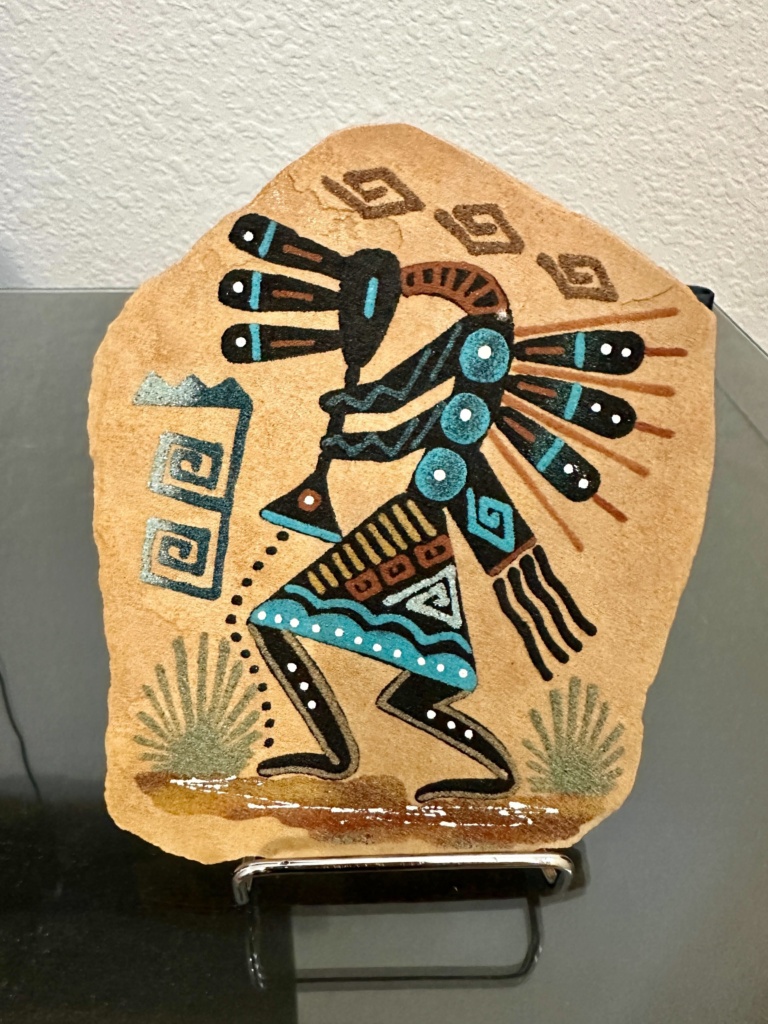
Why Visit Mesa Verde National Park?
Mesa Verde National Park is a destination like no other. It offers a unique combination of natural beauty, archaeological significance, and cultural heritage. Visiting Mesa Verde provides a profound connection to the past and a deep appreciation for the ingenuity and resilience of the Ancestral Puebloans.
Four Days in Mesa Verde National Park
A four-day trip to Mesa Verde National Park offers an immersive experience of the lives of the Ancestral Puebloans and the stunning landscapes they call home. Whether you’re exploring cliff dwellings, hiking scenic trails, or learning about ancient cultures, Mesa Verde promises an unforgettable journey. By planning ahead and respecting the unique environment, you’ll ensure a safe and enriching adventure that will leave you with lasting memories of this extraordinary place.
FAQs about Mesa Verde National Park
What is the best time of year to visit Mesa Verde National Park?
The best time to visit Mesa Verde National Park is during the spring (April to June) and fall (September to October) when the weather is mild and the park is less crowded. Summer months can be hot and busy, while some facilities and tours are limited during the winter months due to snow and cold temperatures.
Can I camp inside Mesa Verde National Park?
Yes, camping is available at the Morefield Campground within Mesa Verde National Park. The campground offers tent and RV sites, as well as amenities like restrooms, showers, and a camp store. Reservations are recommended, particularly during the summer months.
Is Mesa Verde National Park suitable for children?
Mesa Verde National Park is family-friendly and has activities suitable for children. Junior Ranger programs, easy hiking trails, and accessible archaeological sites make it an engaging destination for families. However, parents should be mindful of the physical demands of cliff-dwelling tours and the high altitude, ensuring all family members are prepared.
How do I get tickets for the cliff-dwelling tours?
Tickets for cliff-dwelling tours can be purchased online through the official Mesa Verde National Park website or in person at the park’s visitor centers. It is recommended to buy tickets in advance, especially during peak seasons, as tour spots can fill up quickly.
Are tours of the cliff dwellings guided or self-guided?
Tours of the major cliff dwellings, such as Cliff Palace, Balcony House, and Long House, are guided and require tickets, which can be purchased in advance. Self-guided tours are available at some sites, like Spruce Tree House, but may vary based on seasonal accessibility and ongoing preservation work.

